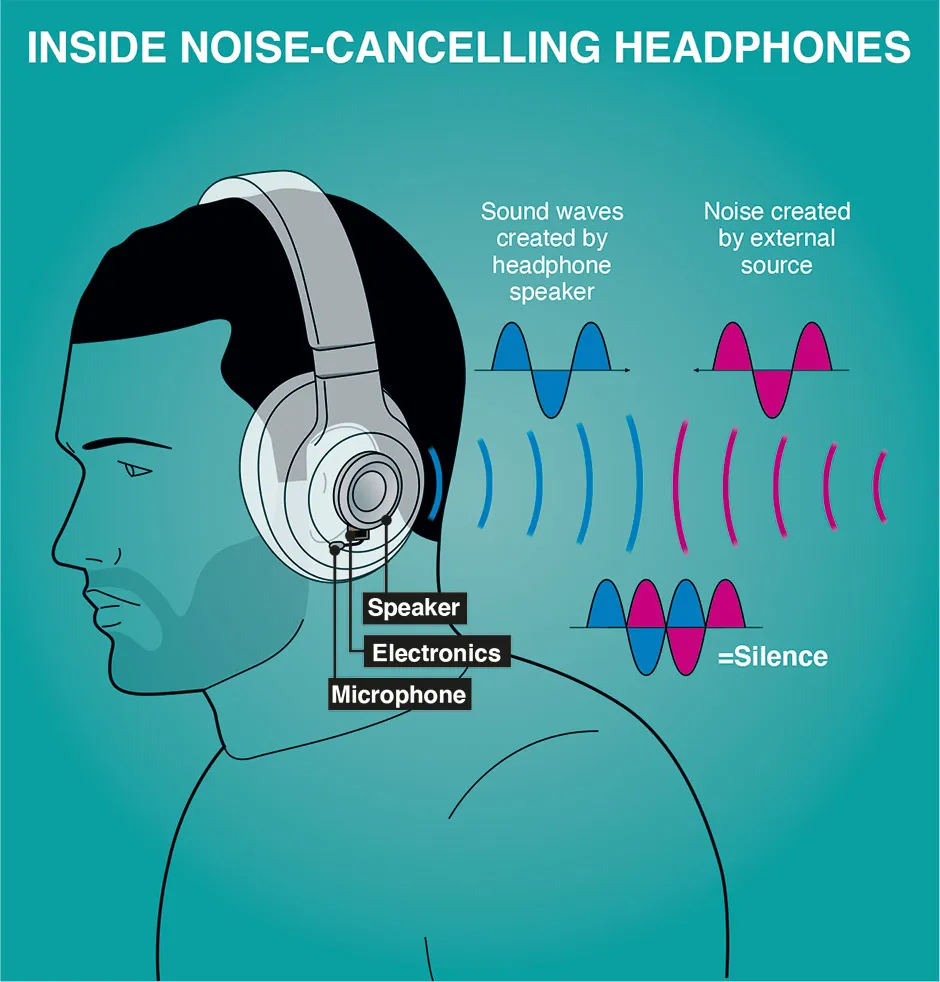Noise-cancelling headphones cancel out unwanted sound by creating an opposing sound wave that mimics the noise you want to get rid of, but just 180° out of phase. This means that when one sound wave is at its highest peak, the other is at its lowest, effectively cancelling each other out. This is known as ‘destructive interference’.
To make this happen, several components are required to work together. First, there is a microphone on the earcup to listen out for annoying external sound. When any such noise is registered, the microphone reports back to the noise-cancelling circuitry with the frequency and amplitude of the incoming sound wave.

With this information, the ‘out-of-phase’ sound is created and then fed into the headphone speakers, along with the music you’re playing. This masks the external noise without being audible itself or affecting the music you’re listening to.
It works best with lower frequencies, like transport noise, and while it can’t erase unwanted sound entirely, around 70 per cent of ambient noise can be blocked using this method. Just remember to keep the headphones’ battery charged – active noise cancellation requires power to work.
Read more about the science of sound:
- Does vinyl really sound better?
- Do I need to buy expensive wires for good audio quality?
- How does a soundbar simulate three-dimensional sound?
- How do we convert audio from analogue to digital and back?
- Secure your soundtrack: the best neckband headphones for tangle-free tunes